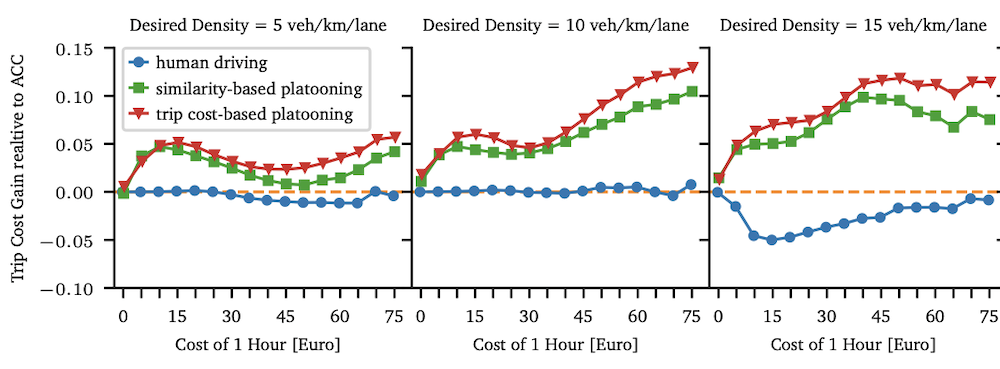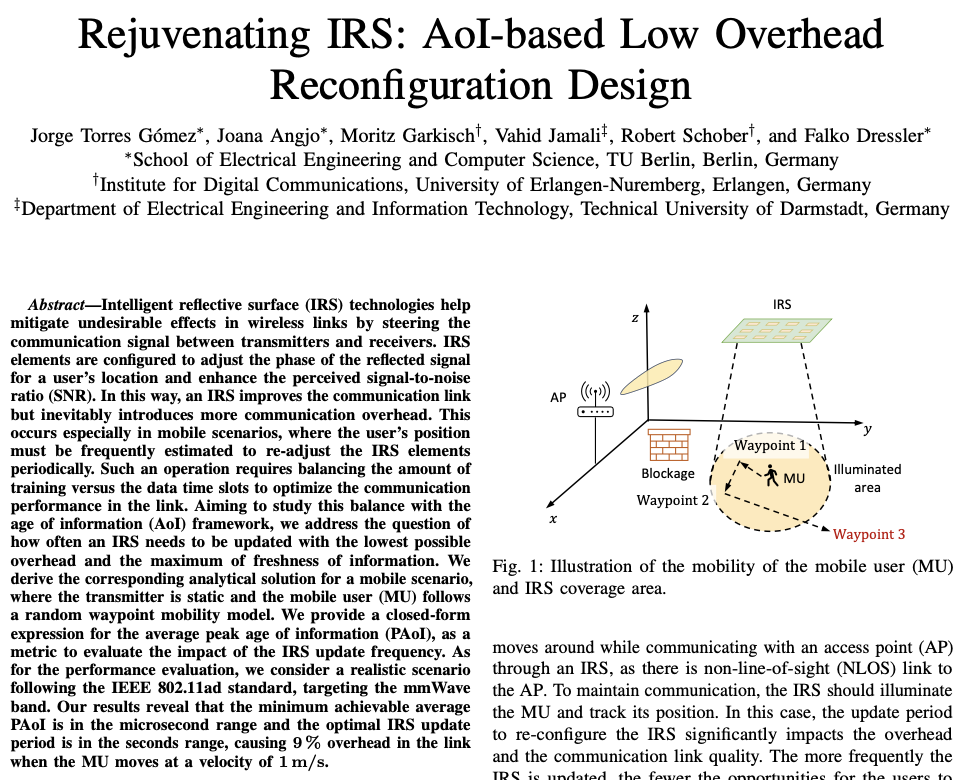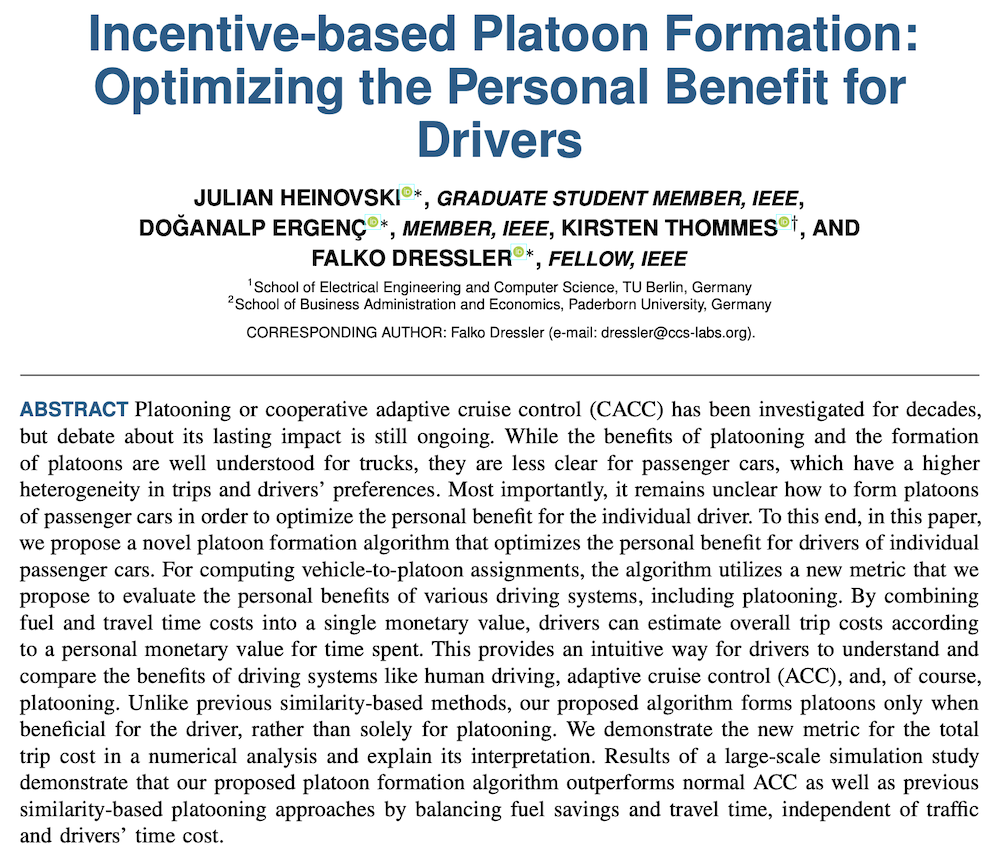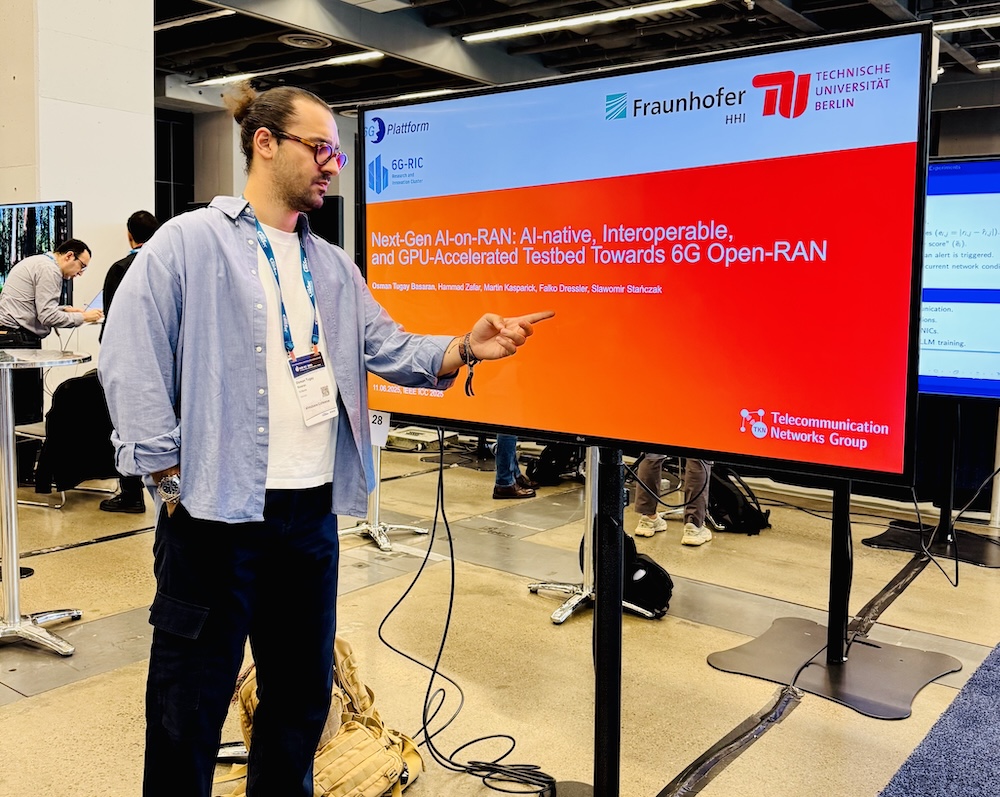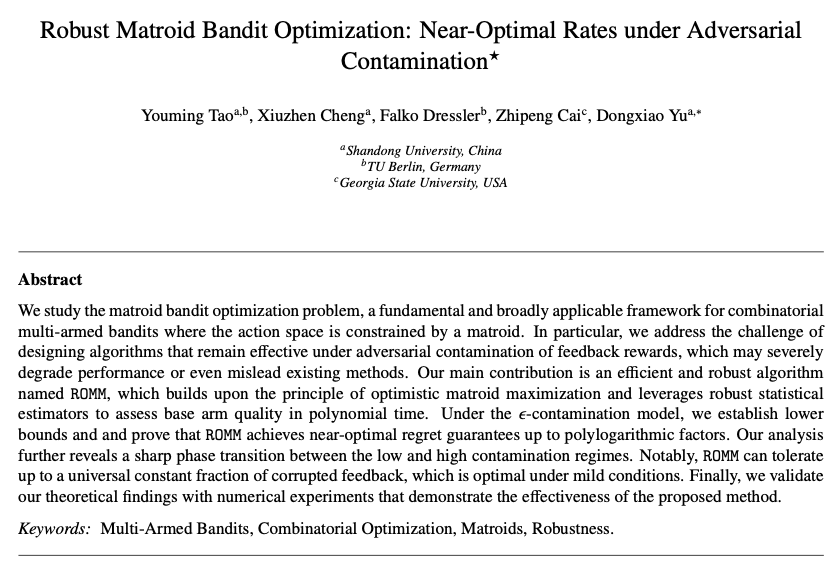Literature Database Entry
ciezobka2024using
Wojciech Ciezobka, Maksymilian Wojnar, Krzysztof Rusek, Katarzyna Kosek-Szott, Szymon Szott, Anatolij Zubow and Falko Dressler, "Using Ranging for Collision-Immune IEEE 802.11 Rate Selection with Statistical Learning," Elsevier Computer Communications, vol. 225, pp. 10–26, September 2024.
Abstract
Appropriate data rate selection at the physical layer is crucial for Wi-Fi network performance: too high rates lead to loss of data frames, while too low rates cause increased latency and inefficient channel use. Most existing methods adopt a probing approach and empirically assess the transmission success probability for each available rate. However, a transmission failure can also be caused by frame collisions. Thus, each collision leads to an unnecessary decrease in the data rate. We avoid this issue by resorting to the fine timing measurement (FTM) procedure, part of IEEE 802.11, which allows stations to perform ranging, i.e., measure their spatial distance to the AP. Since distance is not affected by sporadic distortions such as internal and external channel interference, we use this knowledge for data rate selection. Specifically, we propose FTMRate, which applies statistical learning (a form of machine learning) to estimate the distance based on measurements, predicts channel quality from the distance, and selects data rates based on channel quality. We define three distinct estimation approaches: exponential smoothing, Kalman filter, and particle filter. Then, with a thorough performance evaluation using simulations and an experimental validation with real-world devices, we show that our approach has several positive features: it is resilient to collisions, provides near-instantaneous convergence, is compatible with commercial-off-the-shelf devices, and supports pedestrian mobility. Thanks to these features, FTMRate outperforms existing solutions in a variety of line-of-sight scenarios, providing close to optimal results. Additionally, we introduce Hybrid FTMRate, which can intelligently fall back to a probing-based approach to cover non-line-of-sight cases. Finally, we discuss the applicability of the method and its usefulness in various scenarios.
Quick access
Original Version ![]() (at publishers web site)
(at publishers web site)
BibTeX ![]()
Contact
Wojciech Ciezobka
Maksymilian Wojnar
Krzysztof Rusek
Katarzyna Kosek-Szott
Szymon Szott
Anatolij Zubow
Falko Dressler
BibTeX reference
@article{ciezobka2024using,
author = {Ciezobka, Wojciech and Wojnar, Maksymilian and Rusek, Krzysztof and Kosek-Szott, Katarzyna and Szott, Szymon and Zubow, Anatolij and Dressler, Falko},
doi = {10.1016/j.comcom.2024.07.001},
title = {{Using Ranging for Collision-Immune IEEE 802.11 Rate Selection with Statistical Learning}},
pages = {10--26},
journal = {Elsevier Computer Communications},
issn = {0140-3664},
publisher = {Elsevier},
month = {9},
volume = {225},
year = {2024},
}
Copyright notice
Links to final or draft versions of papers are presented here to ensure timely dissemination of scholarly and technical work. Copyright and all rights therein are retained by authors or by other copyright holders. All persons copying this information are expected to adhere to the terms and constraints invoked by each author's copyright. In most cases, these works may not be reposted or distributed for commercial purposes without the explicit permission of the copyright holder.
The following applies to all papers listed above that have IEEE copyrights: Personal use of this material is permitted. However, permission to reprint/republish this material for advertising or promotional purposes or for creating new collective works for resale or redistribution to servers or lists, or to reuse any copyrighted component of this work in other works must be obtained from the IEEE.
The following applies to all papers listed above that are in submission to IEEE conference/workshop proceedings or journals: This work has been submitted to the IEEE for possible publication. Copyright may be transferred without notice, after which this version may no longer be accessible.
The following applies to all papers listed above that have ACM copyrights: ACM COPYRIGHT NOTICE. Permission to make digital or hard copies of part or all of this work for personal or classroom use is granted without fee provided that copies are not made or distributed for profit or commercial advantage and that copies bear this notice and the full citation on the first page. Copyrights for components of this work owned by others than ACM must be honored. Abstracting with credit is permitted. To copy otherwise, to republish, to post on servers, or to redistribute to lists, requires prior specific permission and/or a fee. Request permissions from Publications Dept., ACM, Inc., fax +1 (212) 869-0481, or permissions@acm.org.
The following applies to all SpringerLink papers listed above that have Springer Science+Business Media copyrights: The original publication is available at www.springerlink.com.
This page was automatically generated using BibDB and bib2web.

